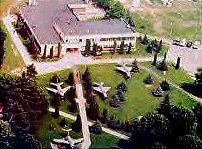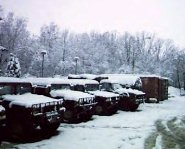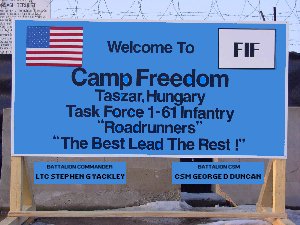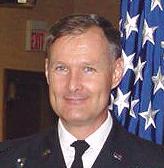
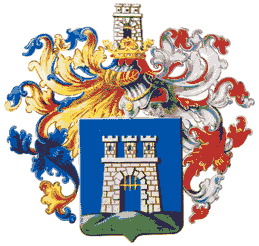


Taszar is located 95 miles southwest of Budapest (approximately 35 kilometers northwest of the city of Pécsz and about 10 kilometers east of the small city of Kaposvar). Taszar Air Base sits astride a well established road, railroad and air transport system and offers the closest airfields to Bosnia and Croatia capable of landing strategic aircraft such as C-5 Galaxies and Boeing 747s for logistical support function.
During World War I, there was no air base at Tasza, but after the armistice of 1918, with Serbian troops moving in to occupy parts of southern Hungary plus Croatia and Slovenia to form the new state of Yugoslavia. The Hungarian (now a Republic) government decided to form the 1st Air Group.
In March 1919, the short-lived post armistice Hungarian Republic collapsed. By 1920 Hungary was forced to sign the Treaty of Trianon (this is the Hungarian Versailles Treaty). Under the terms of this accord, Hungary's armed forces were limited to 35,000 men, and they were not permitted to produce military aircraft or an air force. As a result, many experienced pilots left Hungary. Hungary circumvented this restriction by establishing an aeronautics club at Taszar to train pilots.
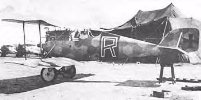
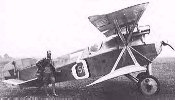
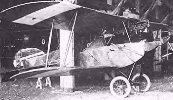
Taszar Airfield was dedicated and opened on September 1, 1929 as a postal station and flight-training base. Pilots trained here formed the nucleus of Hungary’s air force during World War II. As Hungarian aircraft were old Germany provided ME-109s and JU-88s for the Hungarian Air Arm. Given their limited equipment and training Hungarian piolts were quiite good with foun being truely outstanding. They were: Dezső Szentgyörgyi with 34 kills, György Debrődy with 26, Lajos Tóth with 26 and László Molnár with 23
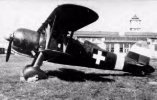
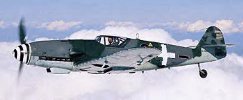
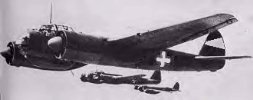
At the end of World War II, Hungary ended-up in the Soviet sphere of influence. In 1949 the new airfield, which is still in use today, was constructed using conscripted labor. The new runways were hard-topped and became the base of the Hungarian 50th Fighter Regimentwith their MIG-15s. A quantum jump in the quality of training was the introduction of the MIG-19 in 1959, and the introduction of the MIG-21 in 1962.
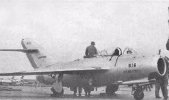
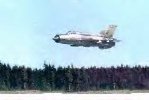

Several Russian MIG fighter squadrons were based here during the Cold War. A plaque placed under the Mig-15 in front of Taszar headquarters states: “Eternal glory to all those who, while preparing for the defense of our homeland, offered their lives.” On the plaque’s sides are the names of 15 pilots killed while training.
In 1989, momentous changes in the international structure had an affect on Taszar. The collapse of communism came in Hungary once again. This was followed by the withdrawal of Hungary from the Warsaw Pact and the exit of "temporarily stationed" soviet troops after 45 years.
America’s interest in Taszar began in the mid-1990s, when the U.S. began planning for a potential deployment to Bosnia in late 1995. Taszar was picked because of its location as a transportation hub, its builtup facilities and its closeness to the Croatian border. Since 1995 the base has fulfilled a dual role as a staging point and a recreational area for American forces in the Balkans.



In March 1999 Hungary officially became a member of the North American Treaty Organization. Immediately afterwards the base was used as a launching pad for American aircraft during the Kosovo War.

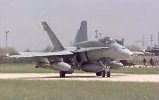

The arrival of American forces in December 2002 and the establishment of TF Warrior marks the third time in eight years that American forces have used Taszar Air Base for a real-world mission. The training of the Iraqi opposition volunteers contributes and highlights Hungarian-U.S. cooperation in the War on Terrorism. A showplace of Hungarian jets outside Taszar Air Base headquarters highlights Taszar's fighter squadron history.
